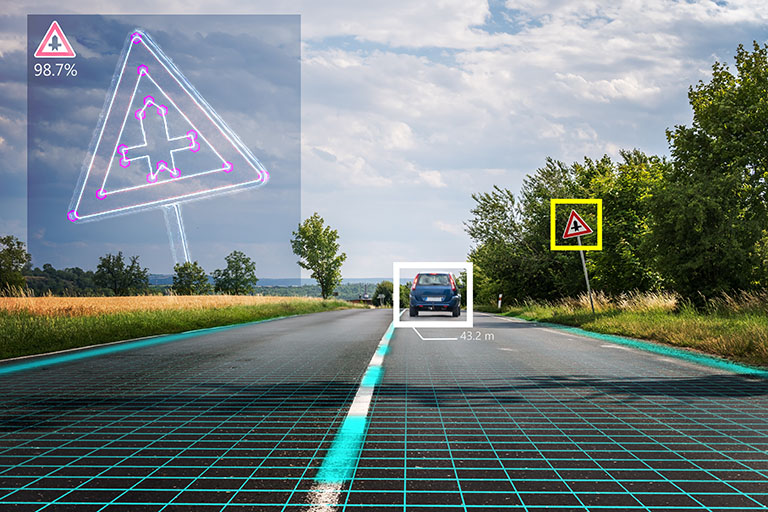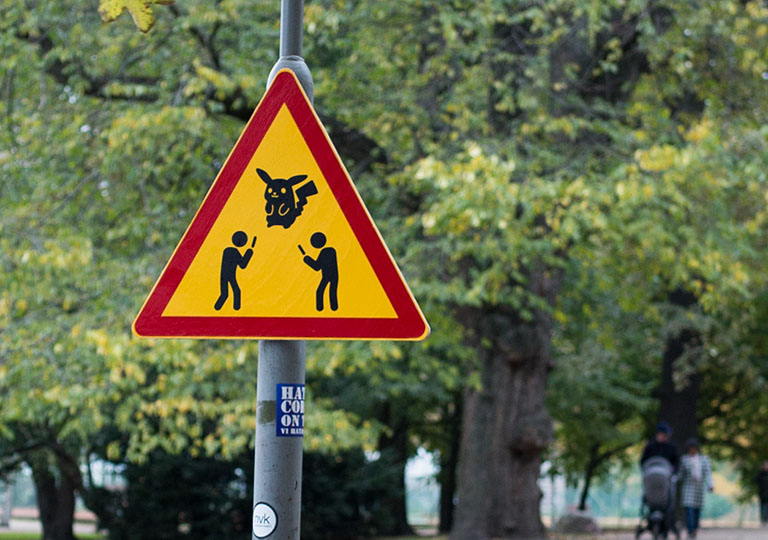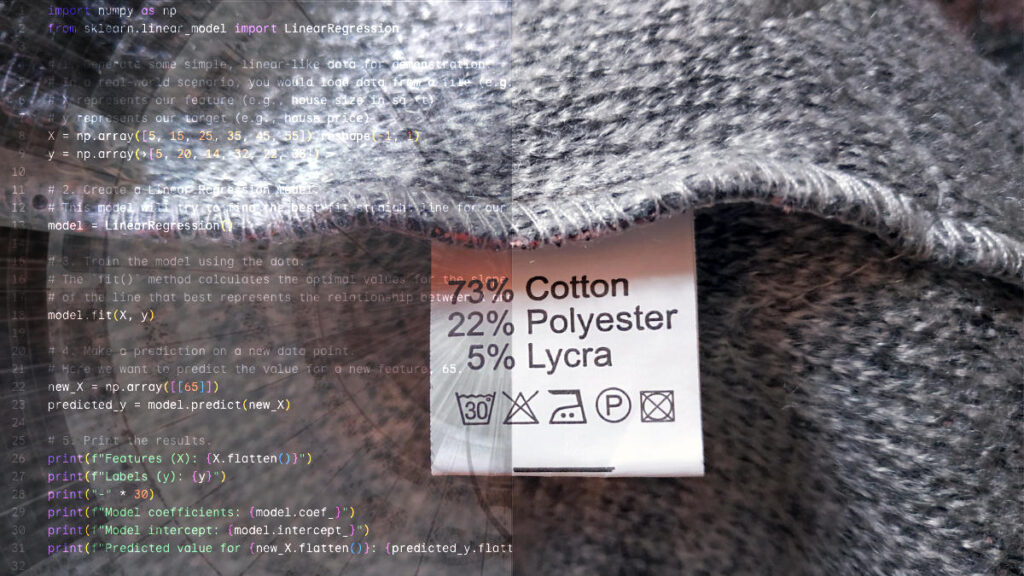Augmented Reality (AR) blurs the lines between reality and digital worlds. AR data labeling involves annotating physical environments with digital information, allowing AR systems to understand and interact with real-world surroundings.
Enhancing Everyday Reality
Augmented Reality (AR) is no longer confined to science fiction; it’s transforming the way we experience the world around us. From exploring museums and trying out furniture to playing games and improving healthcare, AR has become an integral part of our lives. But have you ever wondered how your smartphone seamlessly blends digital elements with the real world? This is where AR data labeling steps in—a vital process that unites the virtual and tangible worlds.
Picture yourself entering a museum or science center and using your smartphone to point at an exhibit. Suddenly, historical figures spring to life, interactive information springs up, and you’re enveloped in an immersive, multidimensional experience. This magic is achieved through AR, driven by the backbone of AR data labeling. Just as audio labeling empowers machines to fathom the language of sound and NLP enables them to decipher human language, AR data labeling thrusts AI into the realm of visual comprehension.
Enriching Interaction
As the AR data labeling process unfolds, AI learns to perceive its surroundings through the lens of human understanding. The annotations, meticulously crafted by annotators, empower AI to recognize objects, assess spatial relationships, and discern attributes within images. This newfound visual comprehension transforms mundane images into dynamic, information-rich encounters.
Imagine using your smartphone’s AR app to explore a city. As you pan your camera, AI processes the visual data, identifies landmarks, and overlays historical information—crafted through the expertise of annotators—onto your screen. Skilled annotators meticulously outline the architectural details of these landmarks, annotate their historical significance, and pinpoint relevant spatial data.
The result is an augmented reality that not only informs but also enriches your experience, turning every glance into a journey through time. This culminates in an experience where your smartphone becomes a gateway to the past, enriching your real-time exploration with layers of historical context.
From interactive city tours that reveal hidden histories to immersive gaming experiences that blur the lines between virtual and real. Popular AR titles like Pokémon GO and Ingress use data labeling to transform physical landscapes into virtual playgrounds. These games invite players to venture outdoors and use their smartphones to spot and capture virtual creatures, objects, and locations that blend seamlessly with reality.
Journey of Transformation
At its core, AR data labeling is a journey of transformation. It takes ordinary images captured by cameras and imbues them with layers of contextual information. This transformation involves annotators, who, like skilled artisans, craft informative labels that guide AI’s understanding of the visual landscape. These labels offer insights into object identities, spatial relationships, and various attributes that transform a static image into a canvas for augmented experiences.
Skilled annotators play a pivotal role in the AR data labeling process. Armed with a discerning eye and domain knowledge, they identify and annotate crucial visual elements within images. From identifying the contours of everyday objects to delineating the boundaries of complex structures, annotators carefully enrich images with meaning. Each label they craft acts as a beacon of understanding, enabling AI to recognize and interact with the world.
The journey of AR data labeling is not just a technical endeavor; it’s a collaborative symphony that harmonizes the efforts of various experts and stakeholders. From setting the project’s foundation to fine-tuning the augmented experience, every step involves a delicate dance of collaboration and co-creation.

Data Annotation Explained
In the world of machine learning and artificial intelligence, the saying “garbage in, garbage out” holds significant weight. This underscores the importance of high-quality data in training robust and accurate models.
AR Data Labeling Process
Advanced annotation tools are the artisans’ brushes in creative AR data labeling process. These tools offer specialized functionalities tailored to various annotation types. Bounding boxes, polygons, and semantic segmentation tools allow annotators to craft precise annotations that AI can comprehend.
The collaboration between annotators and tools is a dance of efficiency. Tools streamline the annotation process, allowing annotators to focus on the task at hand without the burden of technical intricacies.
AR data labeling involves a series of steps that transform raw images into data-rich experiences:
- Image Selection: The process begins with the selection of images that will form the foundation of augmented experiences. These images capture various scenes, objects, and environments that users are likely to encounter.
- Annotation Types: Annotations take myriad forms, each serving a distinct purpose in enhancing AI’s perception. Bounding boxes encapsulate object locations, polygons outline complex shapes, and semantic segmentation assigns distinct labels to individual pixels.
- Annotator Expertise: Annotators meticulously analyze images, identifying objects, structures, and attributes that warrant annotation. Their expertise ensures that annotations are accurate, consistent, and meaningful.
- Annotation Tools: Advanced annotation tools empower annotators to create precise and detailed annotations. These tools offer functionalities tailored to different annotation types, ensuring that the process remains streamlined and efficient.
- Label Assignment: Annotators assign informative labels to the annotated elements. These labels could include object names, attributes, positions, and more. These labels serve as the keys that unlock AI’s understanding of the visual content.
- Quality Assurance: Just as an artist refines their masterpiece, annotators engage in quality assurance to ensure accuracy and consistency. This iterative process polishes annotations, refining them to be reliable and valuable to AI.
As the curtain rises on the augmented experience, the collaboration between various experts blooms into fruition. The annotators’ meticulous work transforms images into information-rich canvases, while domain experts ensure the content’s accuracy and relevance.

Challenges in AR Data Labeling
The real world is not a controlled environment; it’s teeming with variations in lighting conditions, viewing angles, and occlusions. These factors can significantly impact the quality of labeled data. An object might cast shadows under certain lighting conditions, making its features harder to discern. The viewpoint from which an image is captured can distort proportions and shapes. Occlusions, where one object partially obstructs another, can introduce complexity into the labeling process.
Ensuring consistency across annotations, particularly in extensive datasets, is a critical aspect of AR data labeling. Variability in labeling styles can lead to confusion and ambiguity for AI systems. Inaccurate or inconsistent annotations can hinder AI’s ability to recognize objects and understand visual relationships.
As AR applications continue to expand, the demand for labeled visual data grows exponentially. Scaling up labeling operations while maintaining quality and efficiency is a challenge in itself. Project management becomes paramount to ensure that annotated data is delivered within timelines without compromising accuracy.
Annotators employ their expertise to tackle these challenges head-on. They’re skilled at interpreting visual data under different conditions, making informed decisions about object boundaries, shapes, and proportions. Collaborative efforts with domain experts and AI researchers also help in refining annotation guidelines to accommodate real-world variations. Additionally, the iterative nature of the labeling process allows annotators to continuously improve and align their annotations with the nuances of real-world scenarios.
Standardization and well-defined annotation guidelines are the bedrock of maintaining consistency. Annotators adhere to predefined criteria that outline how different visual elements should be labeled. Clear instructions regarding labeling methods, terminology, and potential challenges ensure a harmonious symphony of annotations. Regular training sessions, feedback loops, and collaborative discussions further aid in clarifying doubts, refining guidelines, and fostering a consistent approach.
Conclusions
AR data labeling is the brushstroke that paints the canvas of AI’s visual insight. Through the fusion of annotator proficiency and advanced AR annotation tools, AI gains the ability to recognize, understand, and enhance the world around us. As the AR landscape evolves, one truth remains evident: AR data labeling shapes AI’s evolution, enabling machines to uncover the unseen and redefine our reality.
So, the next time you find yourself in a museum, immersed in a game, or contemplating furniture, remember that AR data labeling plays a pivotal role in heightening your experience. It’s the concealed enabler that artfully merges the genuine and virtual, fashioning a world where opportunities are boundless.
DeeLab, a business unit of Tailjay, serves as a dynamic data annotation hub, connecting skilled annotators with AI projects. Our mission is to offer flexible and agile annotation services, nurturing collaboration with R&D teams and other industry players. Our vision is to drive AI innovation by delivering precise and dependable annotated data for various applications.





